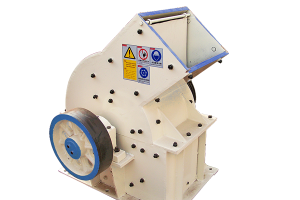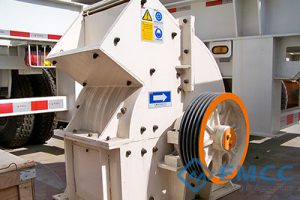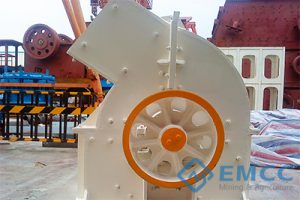Hammer Crusher
We offer complete stationary crushing production line for designs, installation and maintenance with long-term technical support and fast response.
Hammer Crusher
DEVICE DETAILS:
Hammer crusher is widely used in concentrator, refractory plant, cement plant, glass plant and other industrial plants for superfine grinding of medium hardness materials. Dry and wet types crushing are available. Wet type means material is watered to be crushed; dry type means that material must be dry. Hammer crusher has many advantages like big crushing radio (10-25 generally, max 50), high production capacity, uniform final product, low energy consumption, simple mechanism, low weight, and convenience for maintenance.
TECHNICAL PARAMETERS:
| Model | Hammerhead No. | Input Size (mm) | Output Size (mm) | Capacity (t/h) | Power (kw) | Weight (t) |
| PC400×300 | 16 | <100 | <15 | 5-10 | 4P-11 | 0.8 |
| PC350×500 | 20 | <100 | <15 | 8-15 | 4P-18.5 | 1.2 |
| PC600×400 | 20 | <220 | <15 | 10-25 | 4P-22 | 1.5 |
| PC800×600 | 24 | <350 | <15 | 20-50 | 4P-55 | 3.8 |
| PC800×1000 | 28 | <400 | <15 | 20-75 | 4P-75 | 6.5 |
ADVANTAGE:
Feed Port
Big feed port could make higher charging rate.
Hammer Head
High manganese steel and high-chromium iron are adopted good abrasive resistance of machine.
Unique Flywheel Design
Unique flywheel design reduces the shock of machine to guarantee stable operation.
Low Energy Consumption of Machine
In the same situation of power it saves 30% of energy than other machine.
WORK PRINCIPLE:
Hammer crusher’s key part is the rotor with hammer. Rotor is composed of principal axis disk pin roll and hammer. Motor drives rotor rotating in the crushing cavity material will be taken into machine by feeding port and material will be impacted sheared and hit by moving hammer. There is sieve plate under the rotor standard size material will be discharged by sieve plate but coarse sand will stay on the sieve plate to be hit and grinded and finally be discharged out of the machine.






